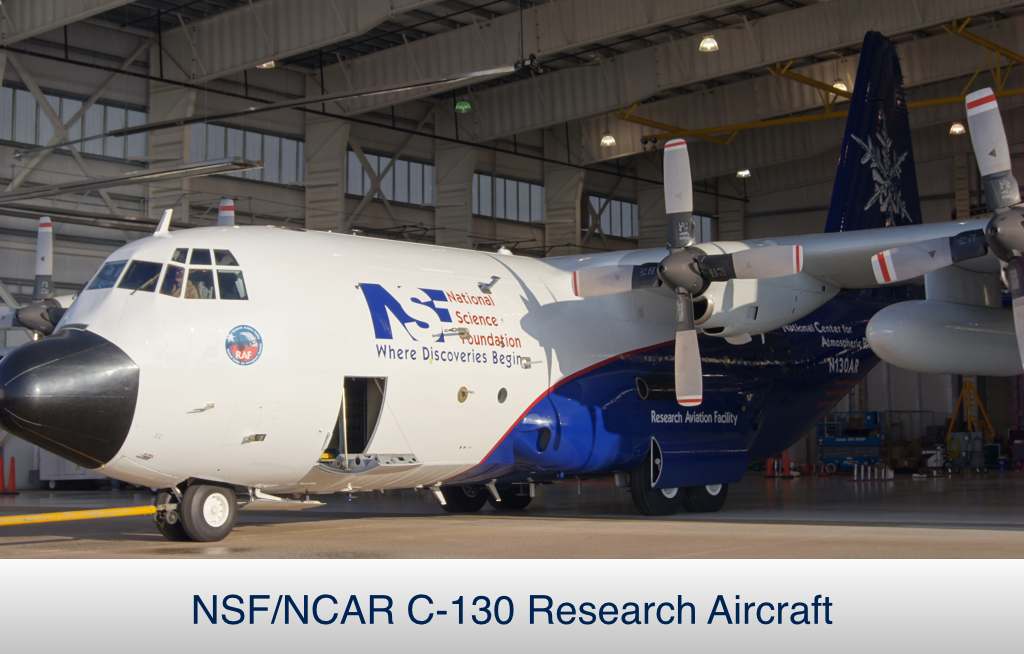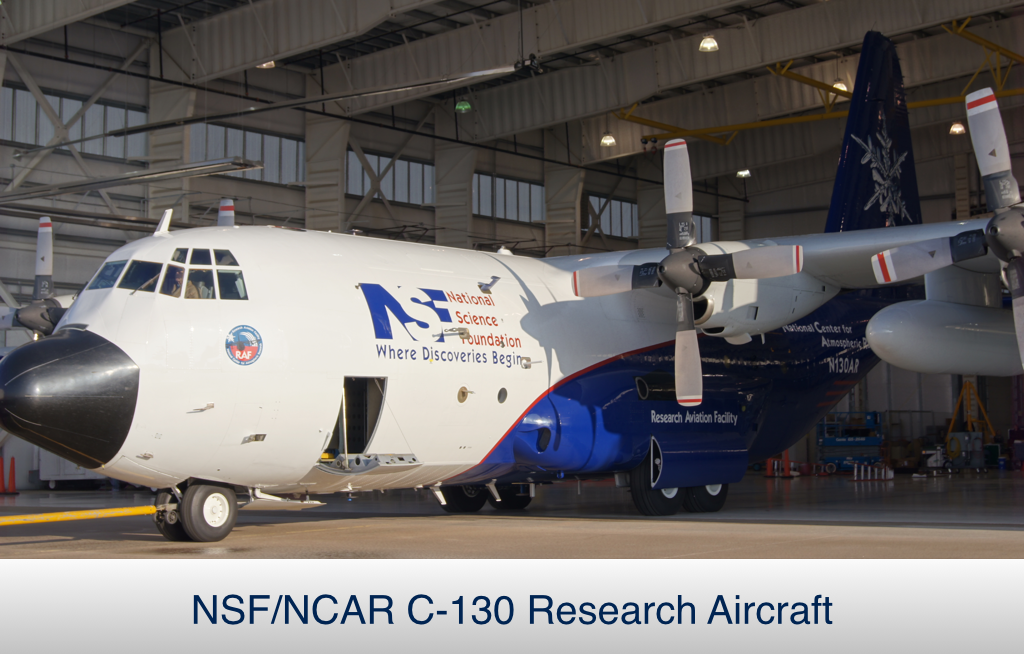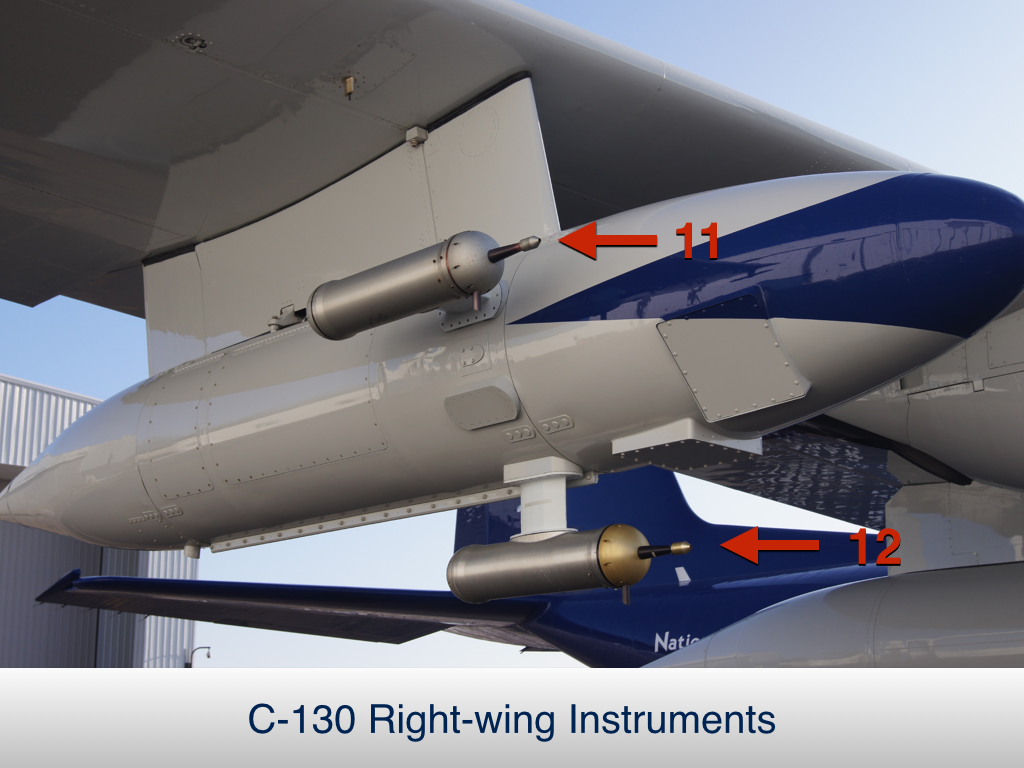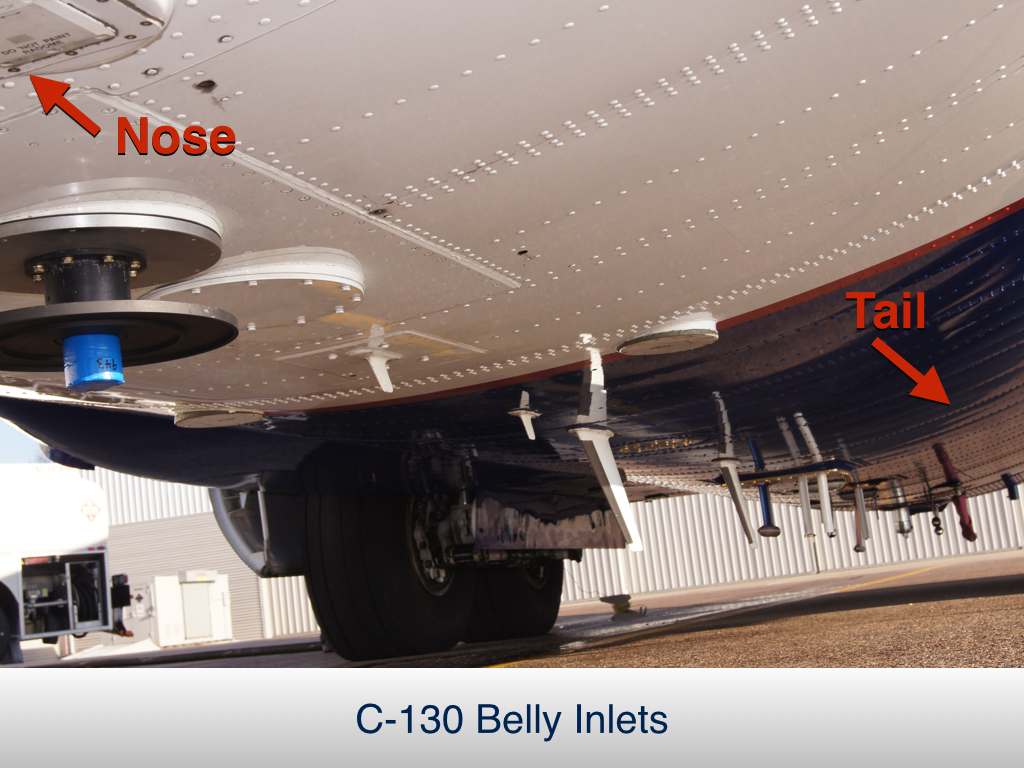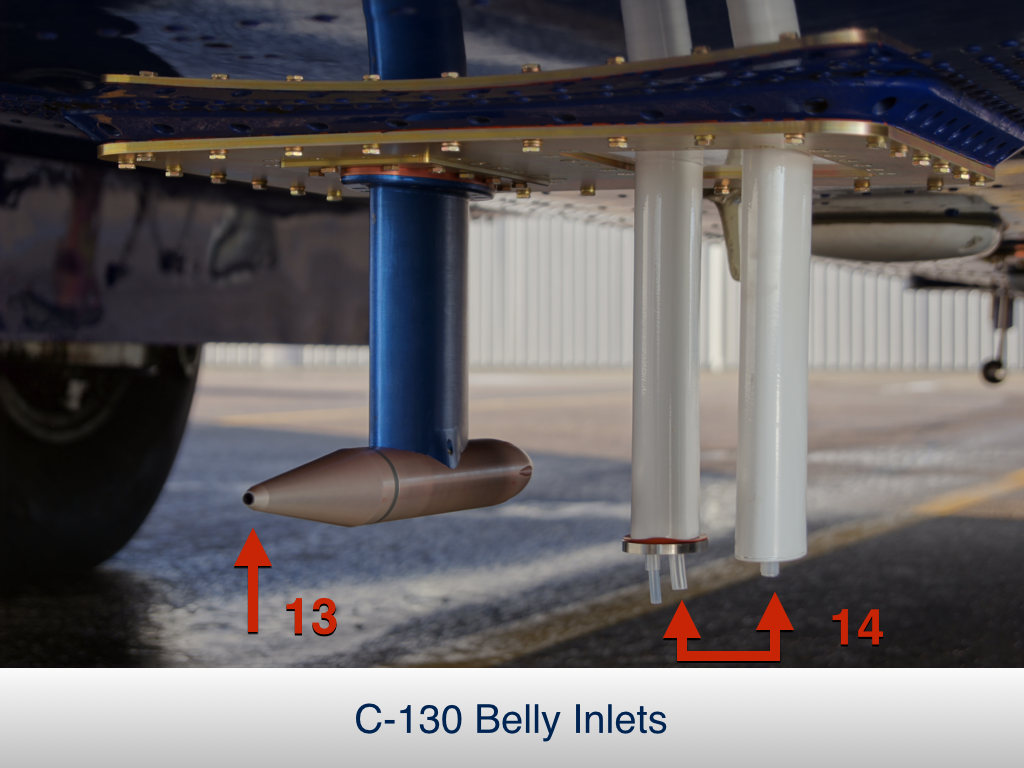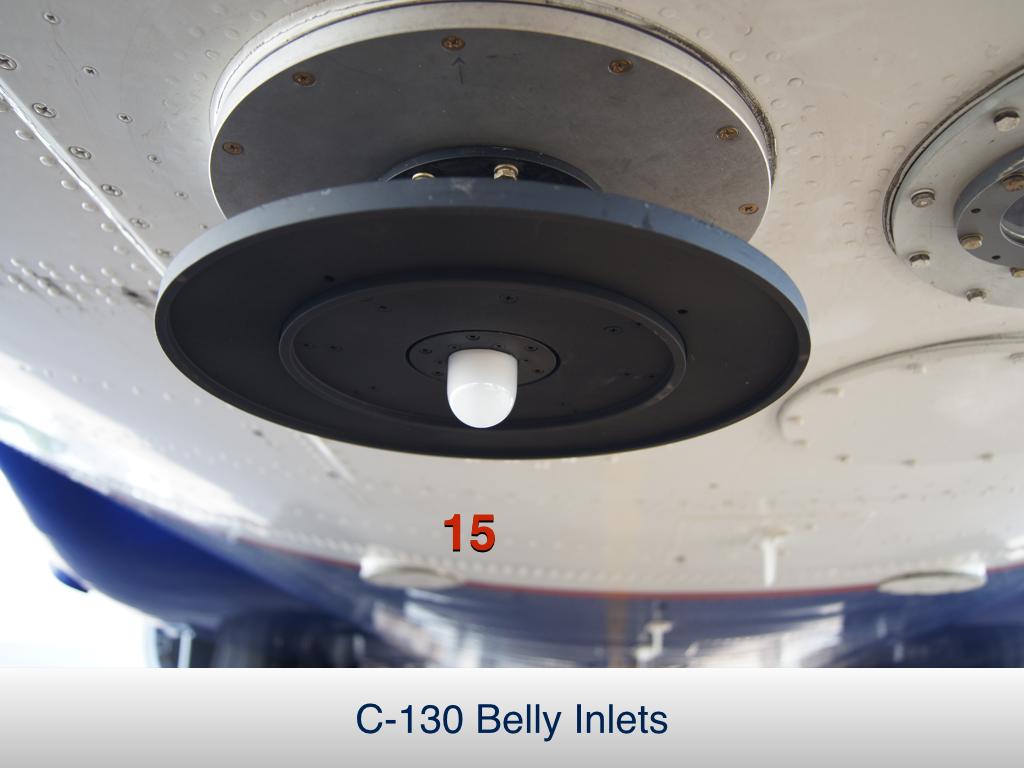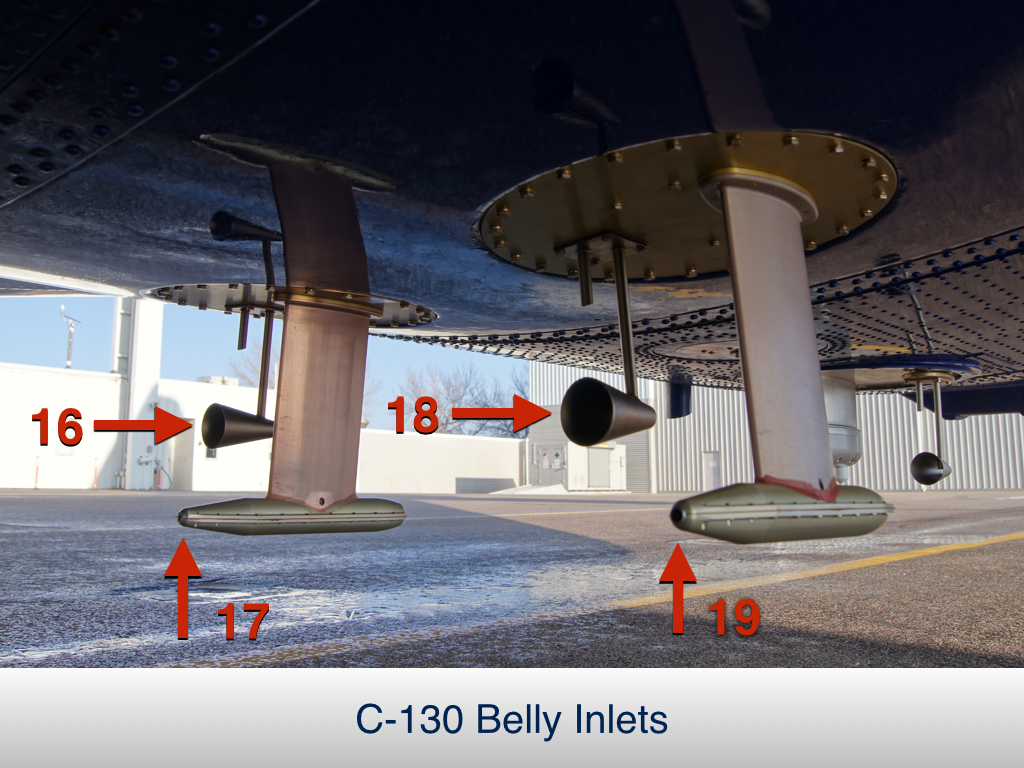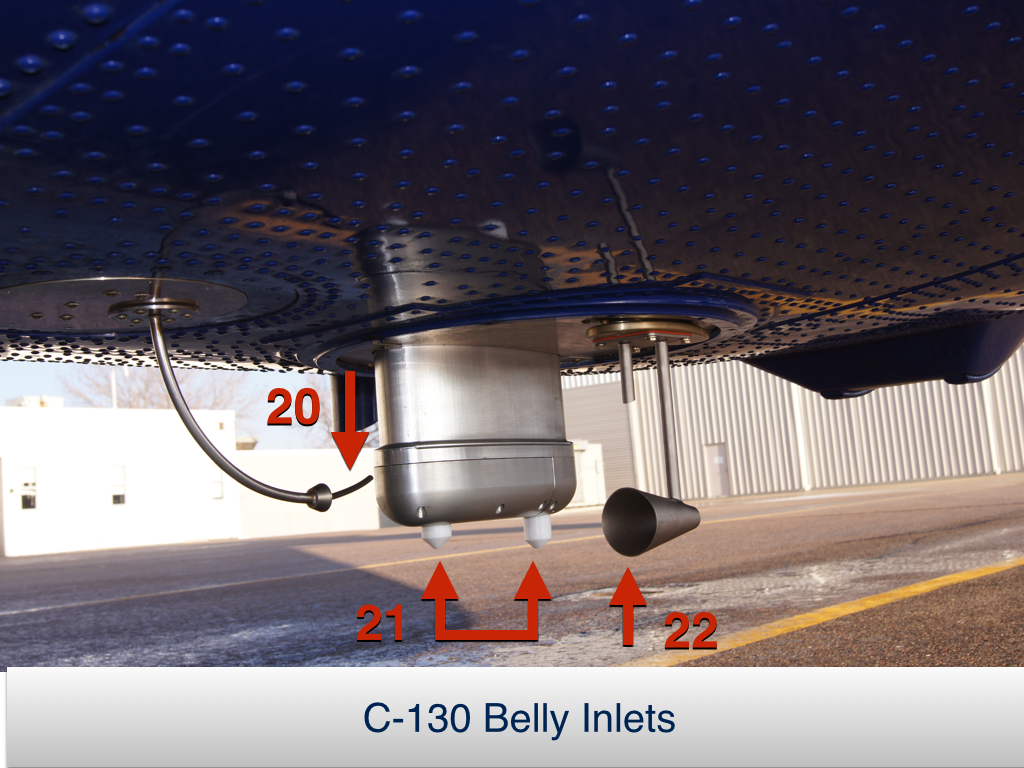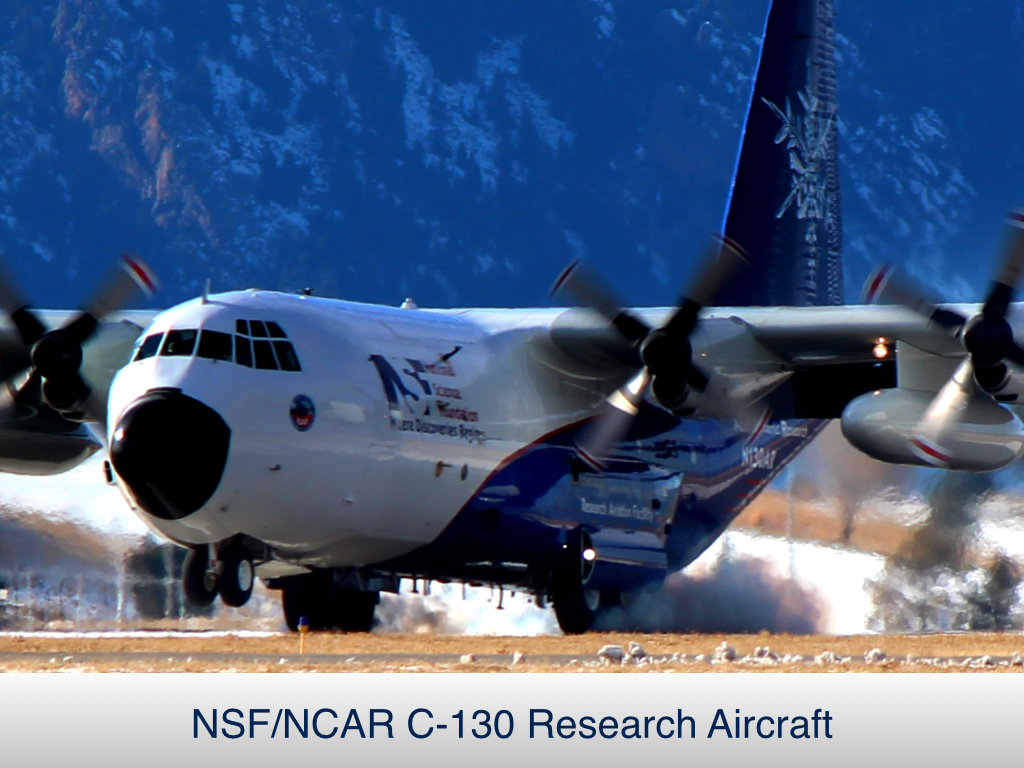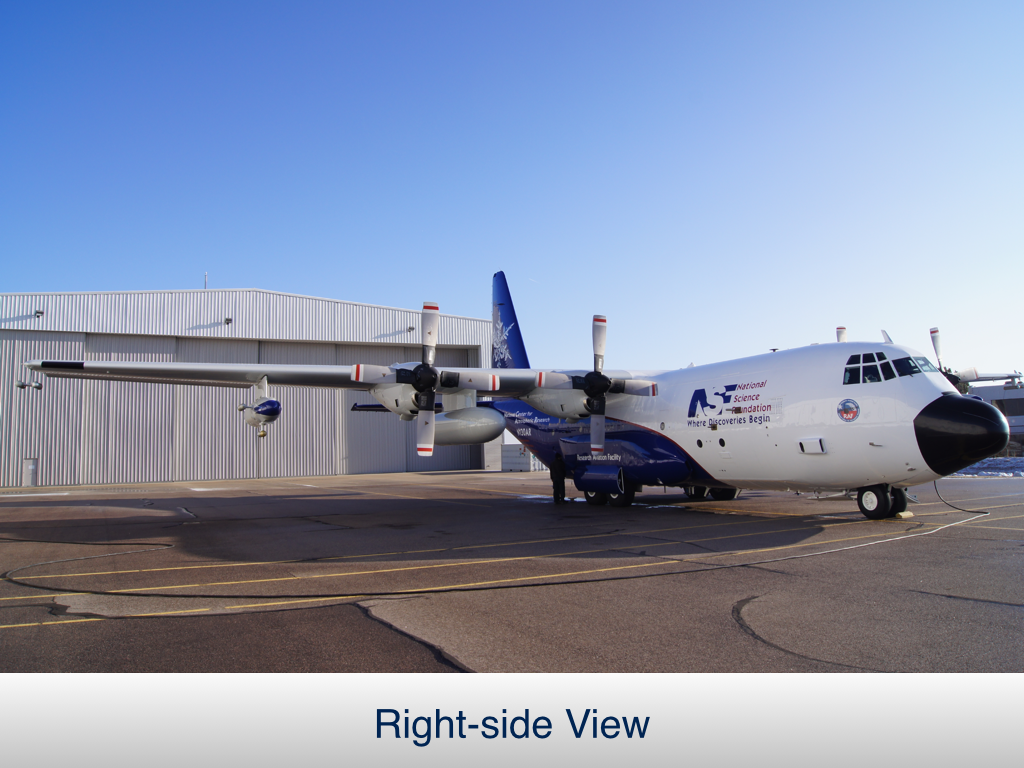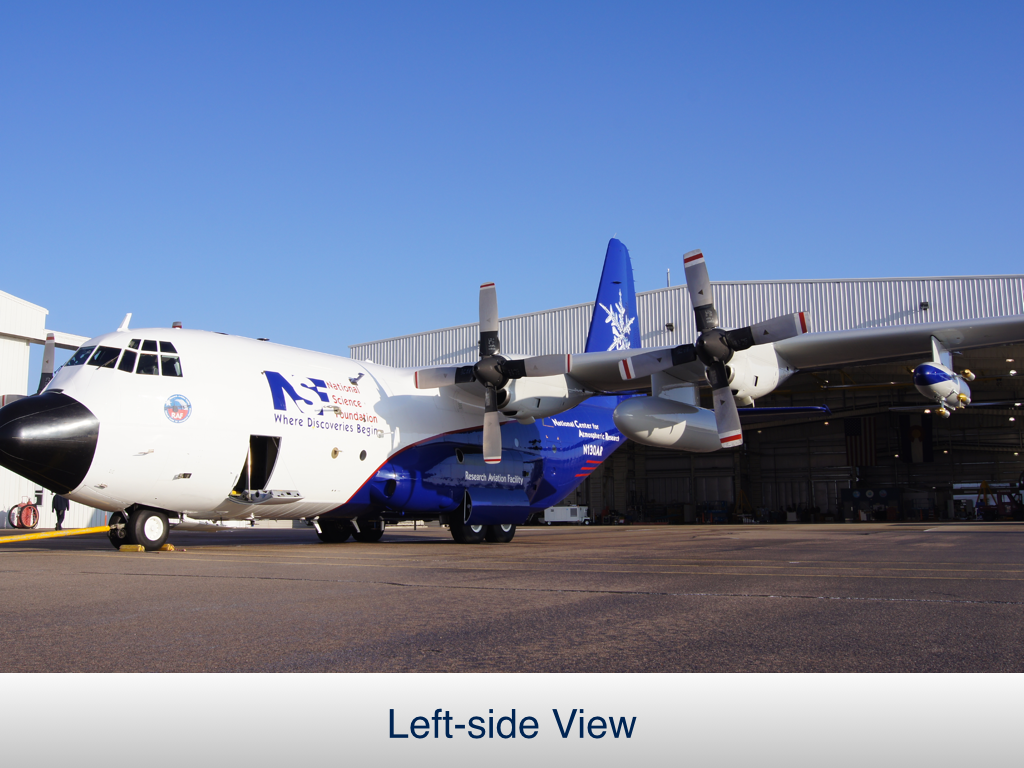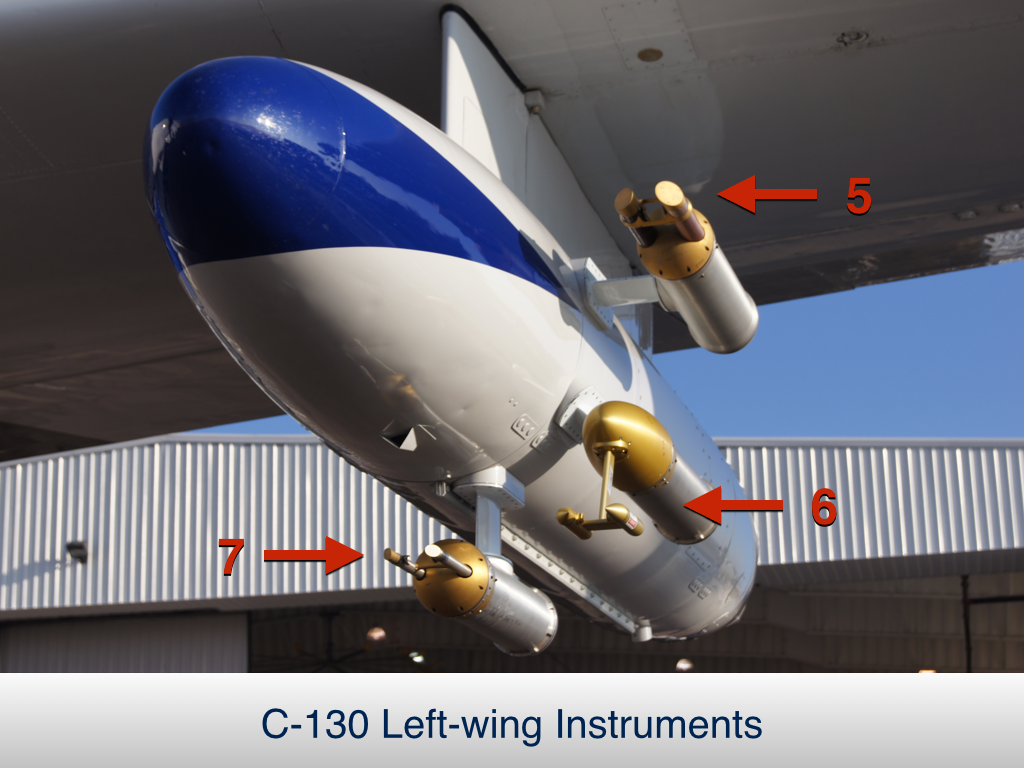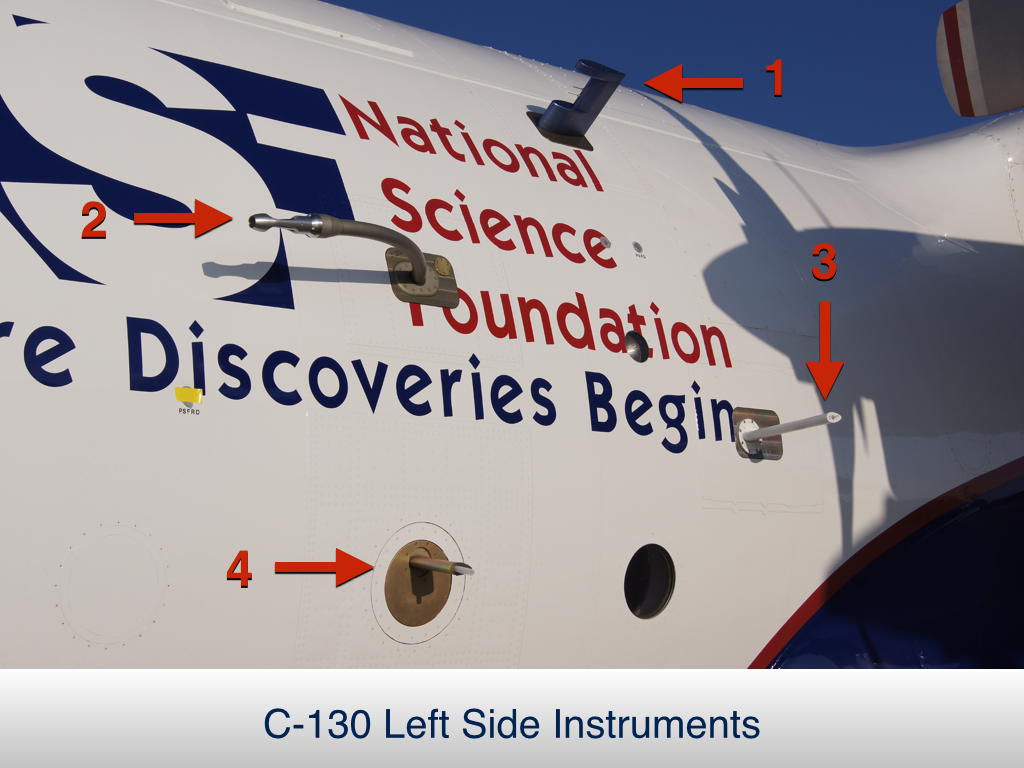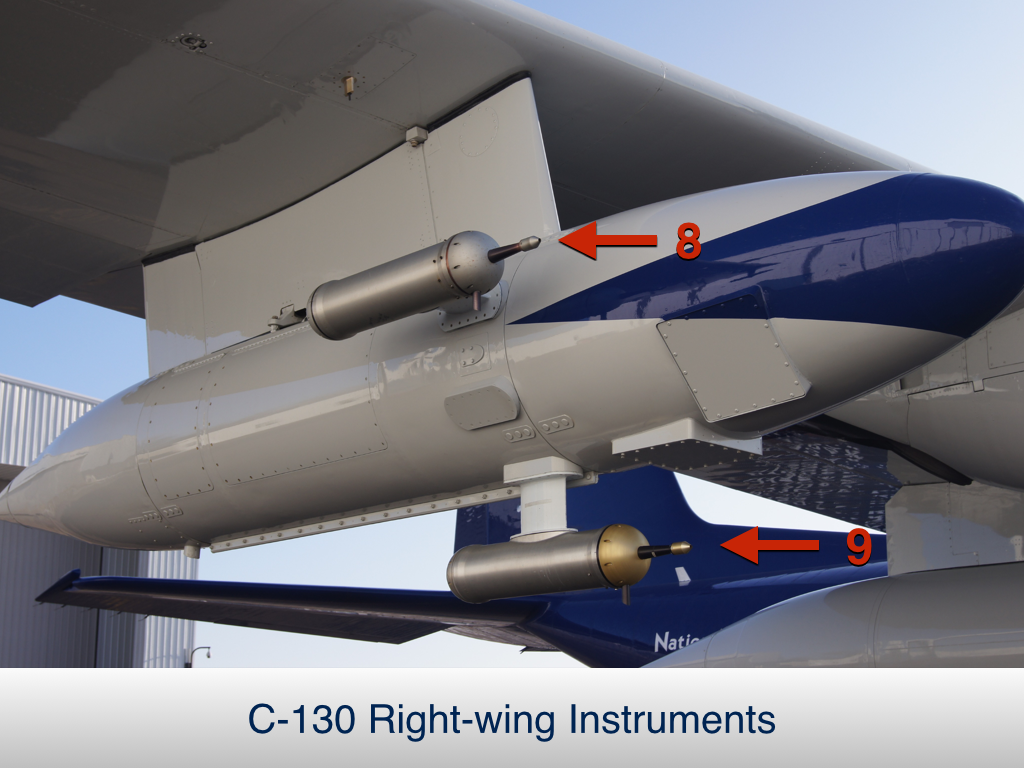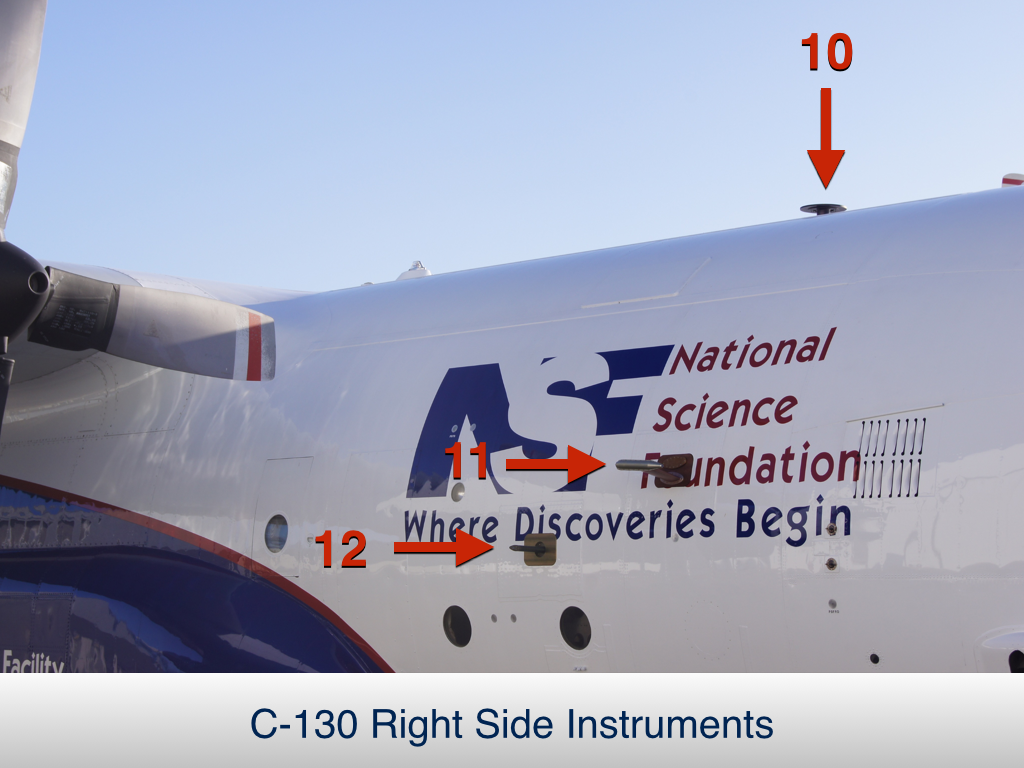WINTER is using the NSF/NCAR C-130 research aircraft, essentially a flying laboratory, to conduct research flights in the Northeast Metropolitan Corridor, the Ohio River Valley, and the Southeast regions. The C-130 originally served as a cargo plane, so it is able to carry a large payload of instruments while also having a range of more than 1500 miles and the ability to fly between 1000 – 15,000 feet in altitude. These aspects are important in order to fully characterize the atmospheric chemistry of a region, because pollutants can be far reaching as winds transport them.
For each field project a specialized suite of instruments are uploaded to the aircraft to meet the research needs of the study. As part of WINTER, the C-130 will carry a suite of state-of-the-art instruments designed to measure a range of reactive trace gases, atmospheric fine particles, and meteorological parameters such as temperature, radiation, and winds.
>> Click images to enlarge.
Left-side Instruments and Inlets
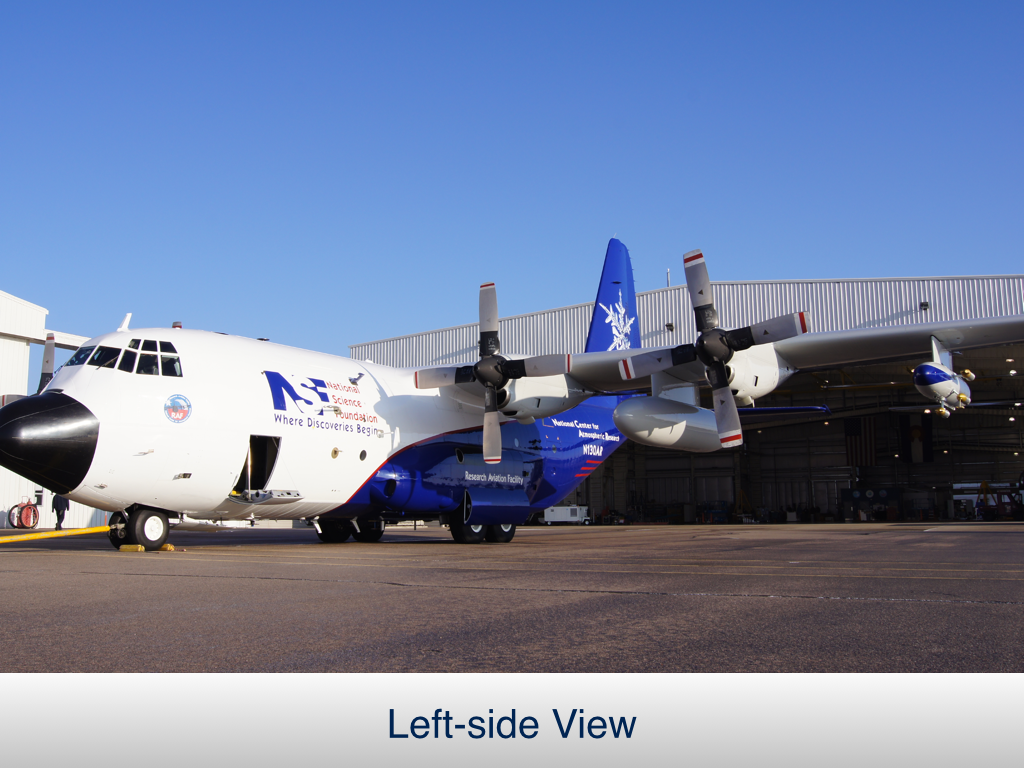 |
|
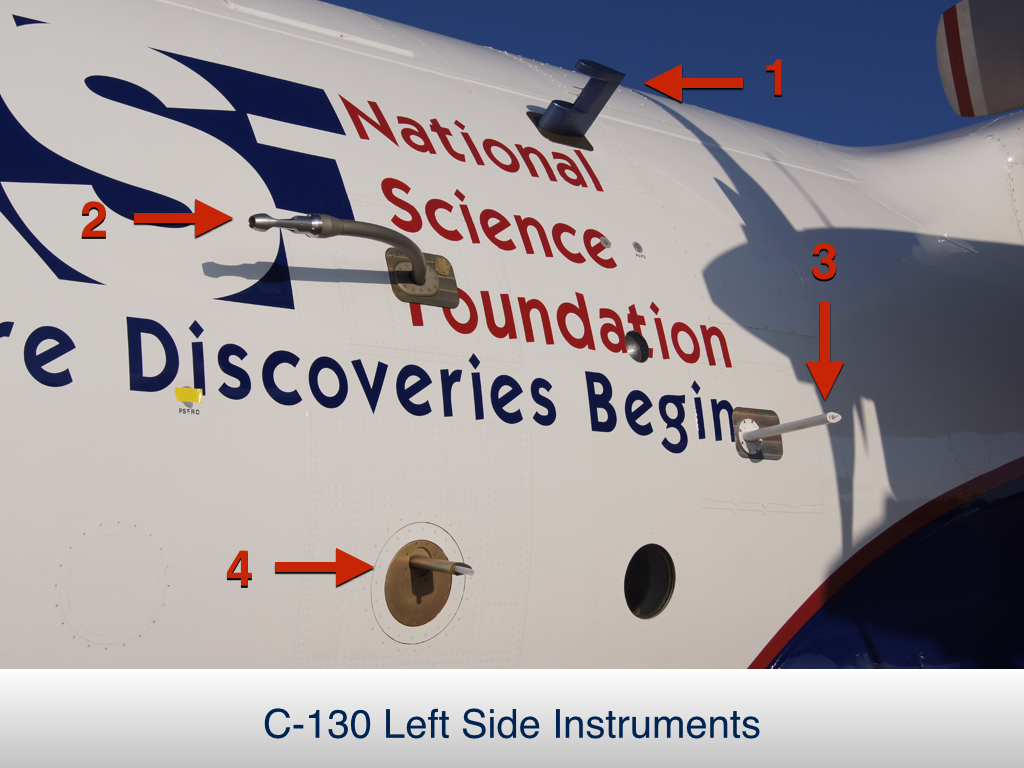 |
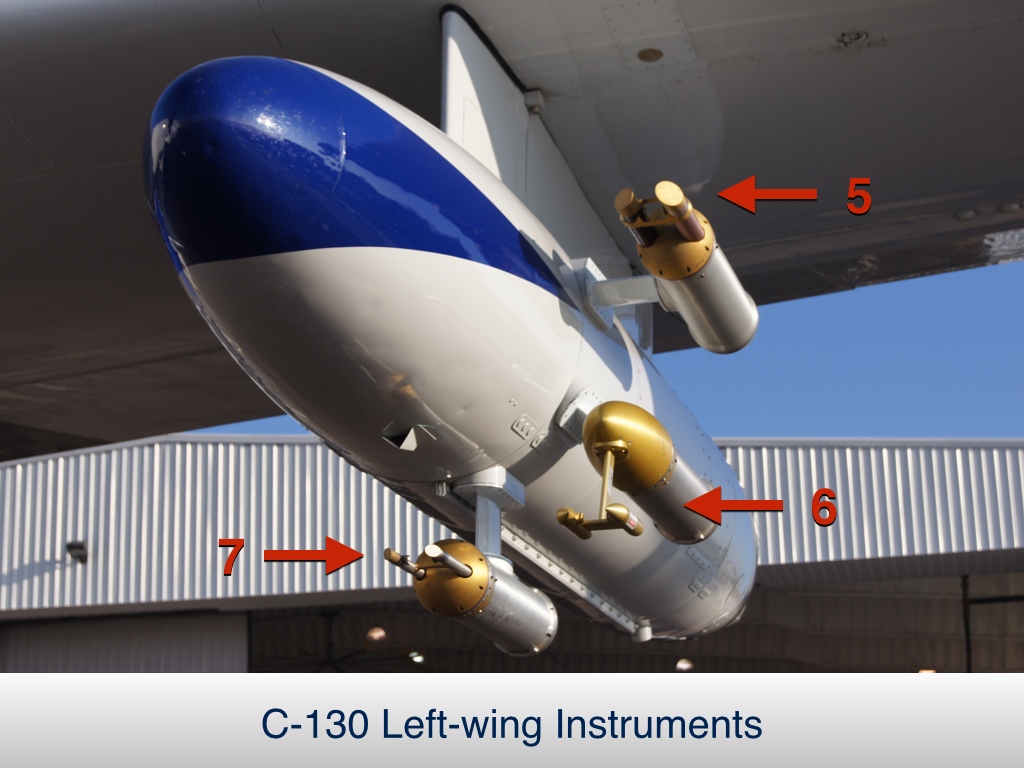 |
|
1. Vertical Cavity Surface Emitting Laser (VCSEL) Hygrometer [NCAR] |
5. Forward Scattering Spectrometer Probe, Model 100 (FSSP-100) [NCAR] |
Right-side Instruments and Inlets
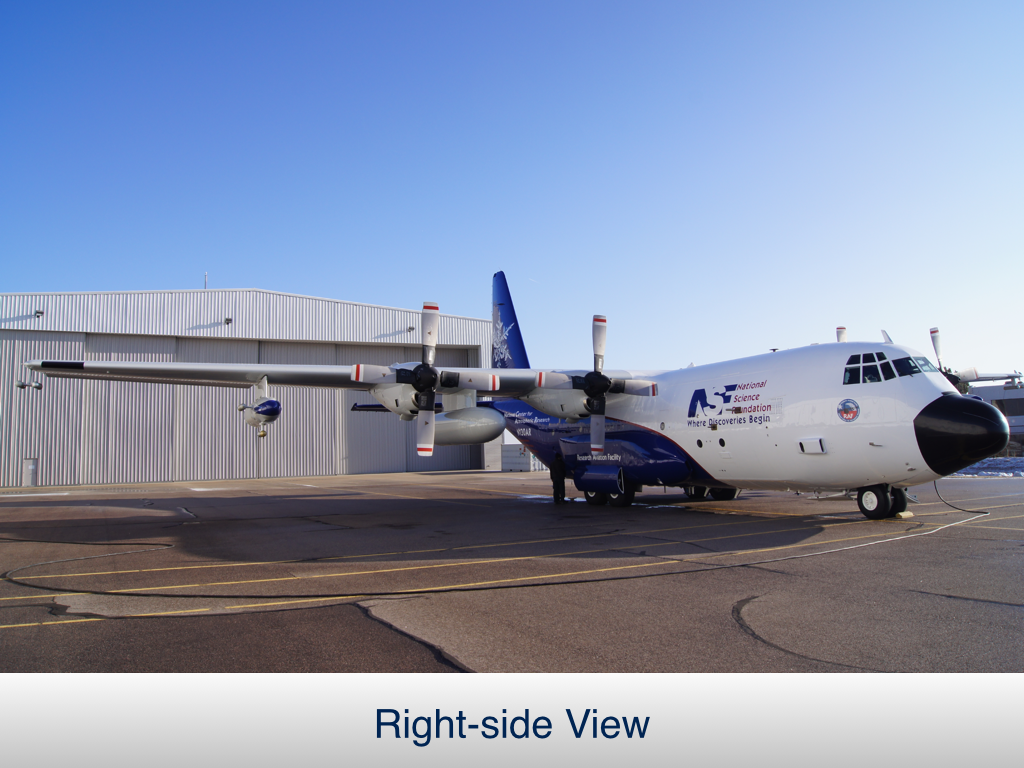 |
|
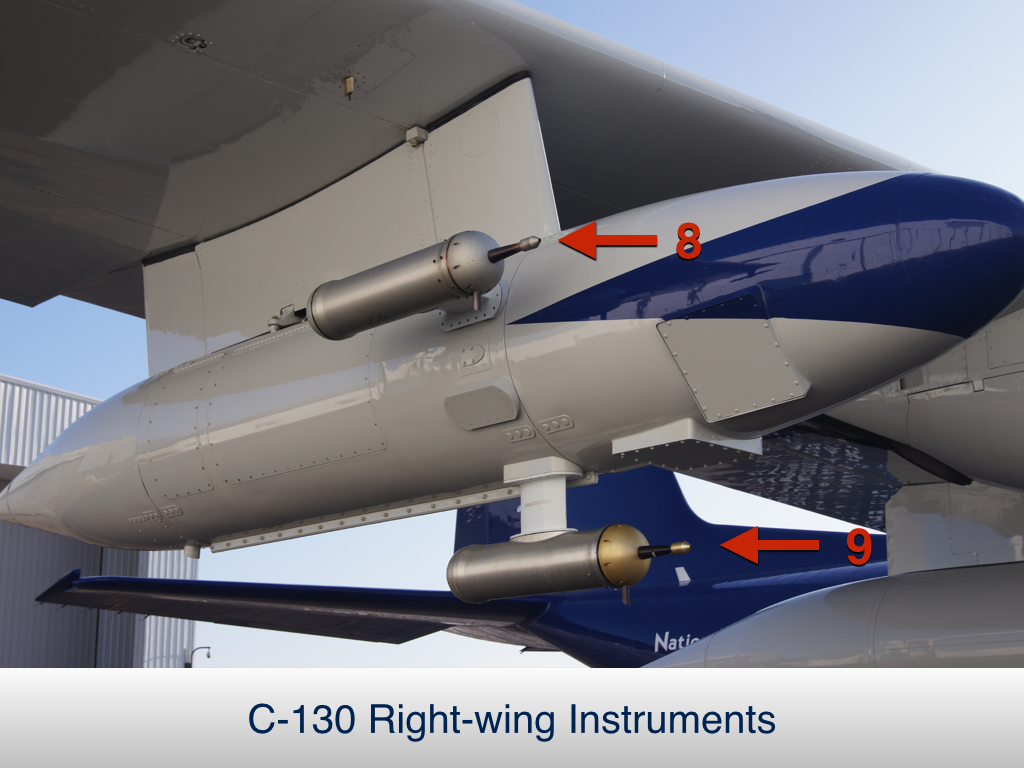 |
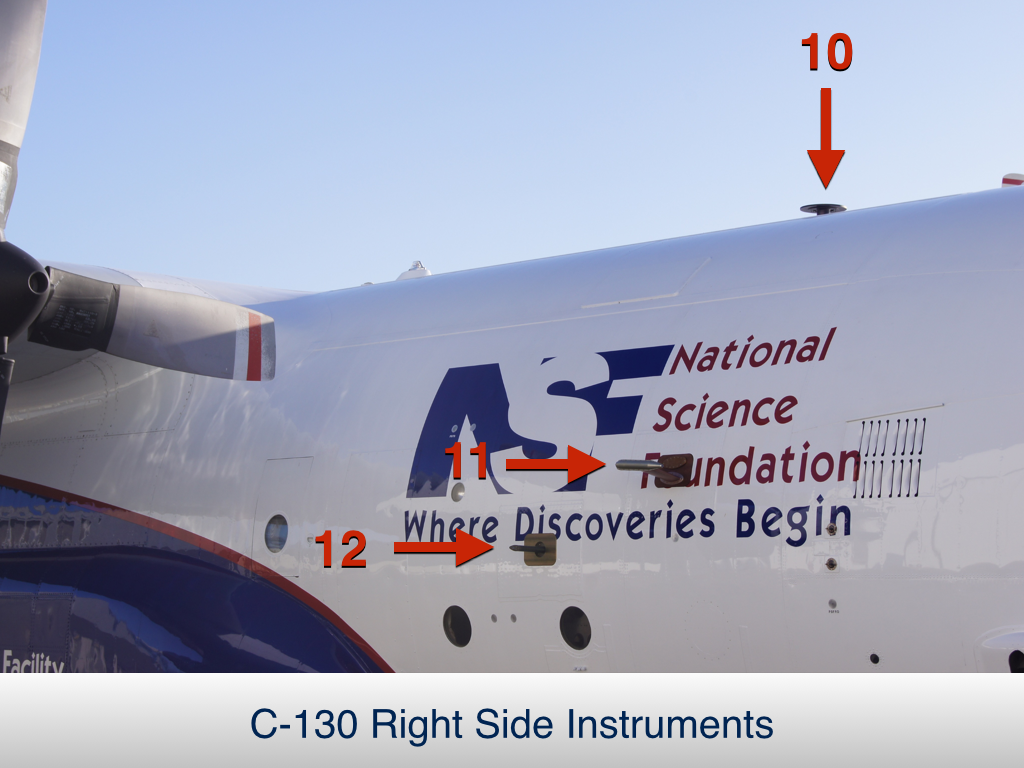 |
|
8. Ultra-High Sensitivity Aerosol Spectrometer (UHSAS) [NCAR] |
10. HIAPER Airborne Radiation Package [Upward-looking] (HARP) [NCAR] |
Belly Instruments and Inlets
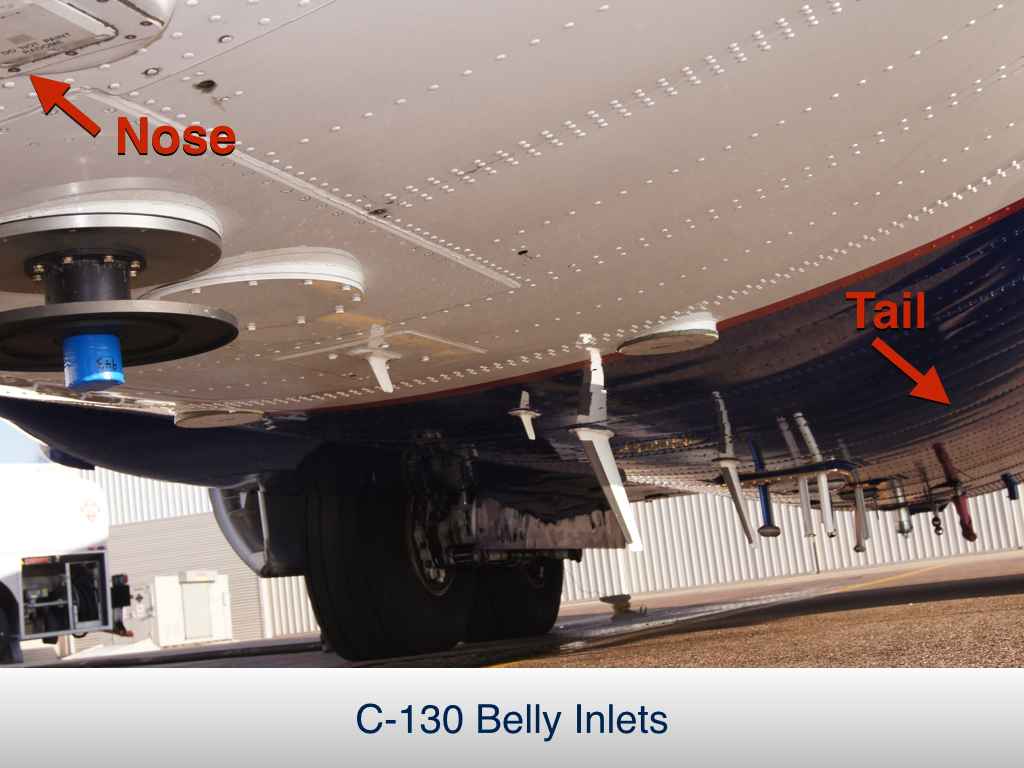 |
|
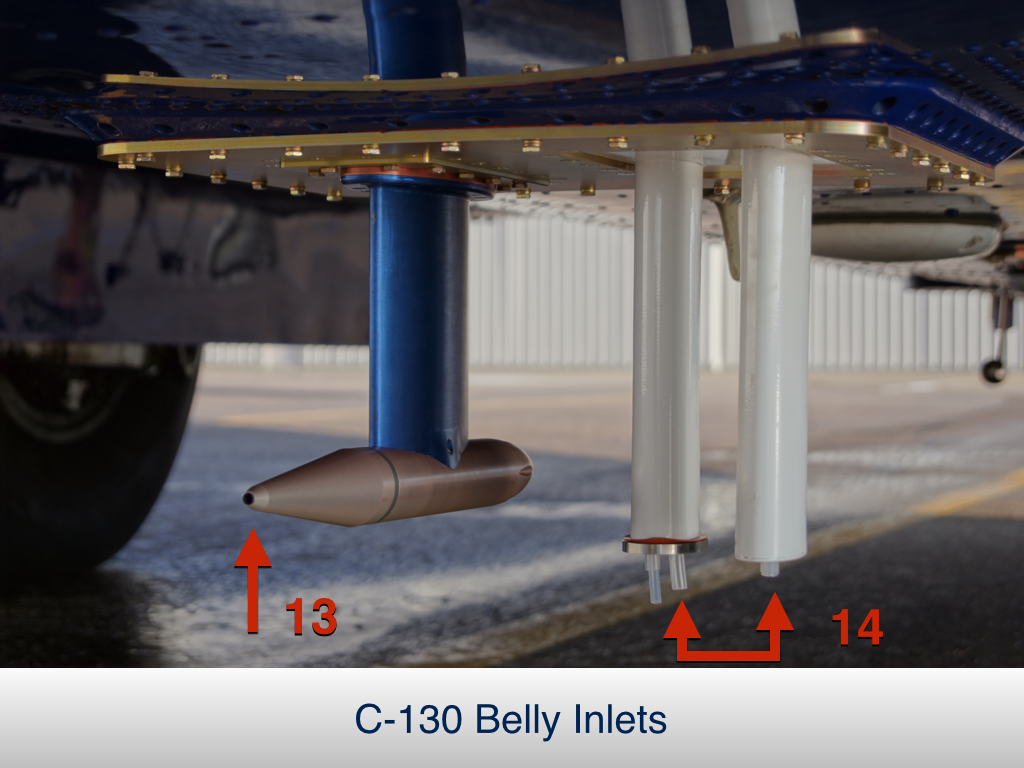 |
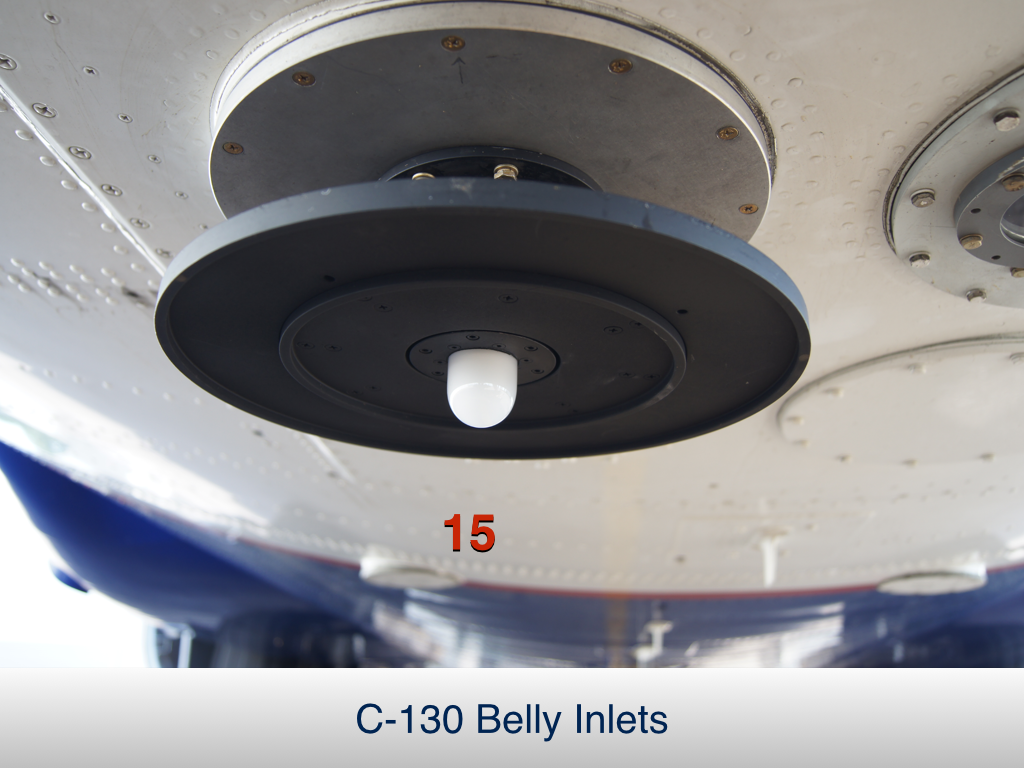 |
|
13. Time-of-Flight Aerosol Mass Spectrometer (ToF AMS) [University of Colorado, Boulder] |
15. HIAPER Airborne Radiation Package [Downward-looking] (HARP) [NCAR] |
 |
 |
|
16. Particle into Liquid Sampler (PiLS2) [Georgia Institute of Technology] |
20. CO/CO2 Inlet [NCAR] 23. Not pictured: SO2 Inlet [North Carolina Agriculture & Technical State Univeristy] |
Dataset Documentation Requirements
